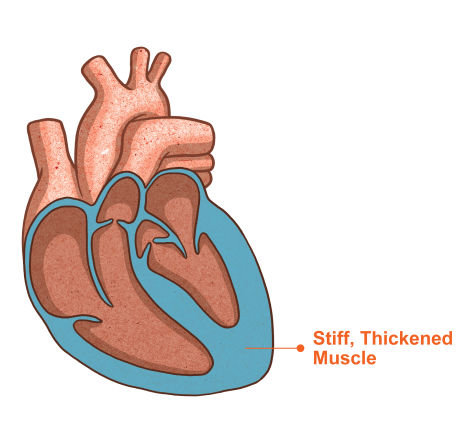
Heart Failure With Preserved Ejection Fraction (HFpEF)
With preserved ejection fraction, the muscles in the heart chamber walls stiffen and thicken so the chamber cannot relax to fill with blood. This means the heart can’t pump out the blood the body needs.
Most common symptoms
-
Both types of Heart Failure share the same symptoms. Learn the differences.
Hear a real patient’s story
See how Cynthia discovered her HFpEF and what she does to stay on top of it.
Diagnosing HFpEF
Diagnosing this kind of Heart Failure is more challenging because an ECG will show an ejection fraction in the normal range.
A process of elimination
When symptoms persist, doctors typically run a series of diagnostic tests. Eliminating other possibilities to arrive at a diagnosis of HFpEF can actually take up to a year and a half.

What it may take to diagnose
Your doctor may suggest one or more of these tests to measure your ejection fraction:
Clinical signs of Heart Failure
Evidence of preserved or normal Left Ventricular Ejection Fraction (LVEF)
Evidence of abnormal Left Ventricular (LV) diastolic dysfunction that can be determined by Doppler echocardiography or cardiac catheterization



